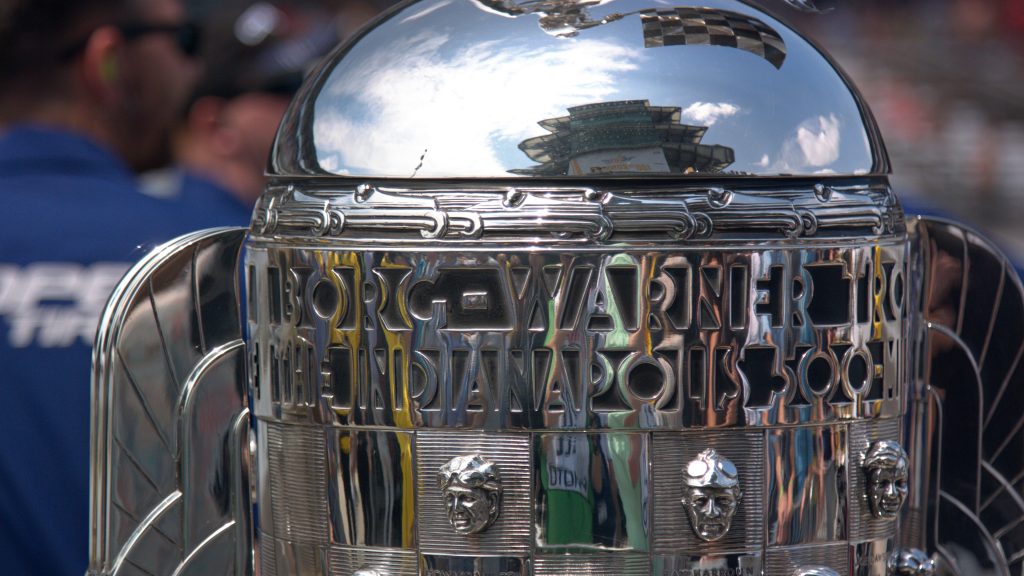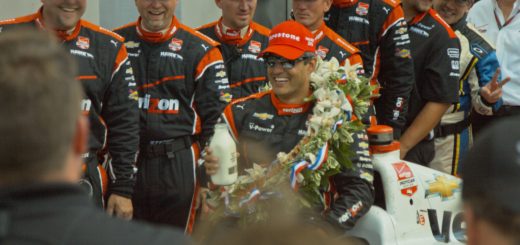Circles and asterisks: The 2020 Indy 500

The year 2020 will certainly be logged as one of the most memorable years in modern human history. The books, movies, TV shows, podcasts and lectures that will be used to describe it will trickle into a flood in five years time. And it still has 4 months to go!
In sports, 2020 will be remembered as the year of the compromise. The 60 game Major League Baseball season played with 7-inning doubleheaders, with the DH not batting in that National League (oh, the humanity). The playoff bubbles in the NBA and NHL. The Premier League’s stop, and restart. Countless other leagues, events, teams and athletes have had to compromise their schedules and lives to put on a show similar enough to their regular course of business. More about that later.
With this as background comes our perspective of this year’s 104th Running of the 2020 Indianapolis 500, a race, that until a few weeks ago had every intention of running with fans. That didn’t happen, of course (and we think that was 100% the right choice), but it set the stage for a very strange day indeed. Normally we share this recap post from the airport, after we’ve had a chance to digest the day, but nonetheless, here are four things that had us thinking after the race.

1. Is an Indy 500 race without fans better than no race at all?
The answer to this one is a resounding YES. It started with our personal compromise, which was to opt-out of attending our 9th straight race, and we think it was the right decision to run without fans. And, yes, we can totally relate to the pain and frustration suffered by fans who broke their streaks at 25, 30, 40, 60 straight years. It flat out stinks not to be there in person. And it was weird for us. There’s nothing else like Indy 500 raceday. Full stop.
But, in the grand scheme of things, we were grateful that the race was being run at all, a worthy distraction to all of the other stressors that exist in the world in 2020. And, it very well may have saved the IndyCar Series overall. So, there’s not a lot to find fault with here.
2. Is IndyCar safer than it’s ever been before?
Thankfully, this seems to becoming somewhat of a rhetorical question, but this year’s race featured a abnormally (at least recently) high number of big crashes. Two incidents especially come to mind as demonstrating IndyCar’s massive safety advances over the last generation:
- Oliver Askew’s huge shunt in turn 4 while avoiding a spinning Conor Daly. His crunch against the inside wall (which, until somewhat recently wasn’t covered in a SAFER barrier) was positively Kevin Cogan-esque. Thankfully he emerged with minor injuries and will live to race another day. (As did Cogan, who was as starcrossed a driver as Indy has ever seen)
- Spencer Pigot’s absolutely massive collision with the attenuator at the end of pit wall was one of the scarier collisions we have seen in a while. The attenuator has seen a few iterations since the first energy-absorbing version was put in place in 1991, but the latest version, combined with the additional cockpit protection offered by the aero screen, likely saved Pigot from potentially grave injuries. Compare the outcome of the above with Dennis Firestone’s Carb Day crash from 1986, and you will see just how far we have come. (Firestone himself, fortunately suffered minor injuries after having to be pried from his car)
Between improved car construction, the SAFER barrier and aeroscreen, race day ended up being a relatively injury free affair, especially given the high number of crashes. So, we’ll go with a YES on this on too.
3. Should the race have ended under a yellow flag?
Ok, this one is a little trickier, because I’d be lying if it wasn’t unfortunate that the fans weren’t allowed to see Takuma Sato (now a two-time winner) and Scott Dixon (and even Graham Rahal) battle it out. But given the very short timeframe (the crash happened at the end of lap 195) which even in the best case scenario would have allow scant time to throw the red flag, have cars come down pit road (which would have been challenging given the the location of the accident), park, restart, gather the field for the restart, do at least one lap around and throw the green?
Mehhhhh…. This one I have to file under “We see why they did it, but it still stink that it had to be that way.” Or better yet, I’m going to add my voice to the “blame 2020” chorus going on around this one. (See? 2020 is the year of the sporting compromise)
For what it’s worth IndyCar confirmed this in a statement later in the day:
4. Will this be the last Indy 500 for Fernando Alonso, Helio Castroneves and Tony Kanaan?
Fernando Alonso: Yes
Well, I would think there is little doubt of this one considering Renault’s public omission that he would not be allowed to race there in 2021 and 2022, and he will be 42 after that is over. Is it impossible? Of course not, but I’d rate it as highly unlikely. And that’s a shame after missing the show last year and not being a factor in 2020 (Finished P21) after a clutch failed mid-race – especially considering the electricity he brought back in 2017.
Helio Castroneves: Yes

His Penske deal is over at the end of the year. He will be 46 by the next time the Indy 500 rolls around again. And he insists he will be back somewhere and that IndyCar remains his passion. But with a youth movement gaining steam in IndyCar, and available rides being few and far between, and likely funding being very tight in a potentially post-pandemic world, it may just be time for Spider-Man to sail off into the Indy 500 moonlight with 3 wins and 3 2nd places in 20 Indy 500 attempts.
Tony Kanaan: No

Call it just a feeling but given Tony’s fan-favorite nature and ability to seem to pluck sponsor money out of the air, and his recent loyalty to A.J. Foyt, I just feel like Tony’s going to pull out a ride in 2021 to really sign off for the fans as part of TK’s Last Lap. The 2013 winner will also be 46, but probably feels cheated out of a chance to say goodbye to the fans that love him so. Here’s hoping he gets one. And that we will be back to see it in person.




